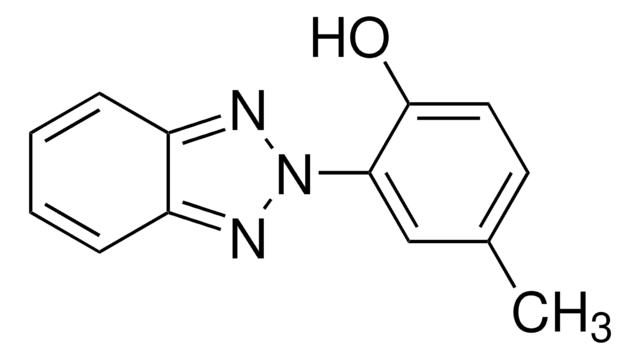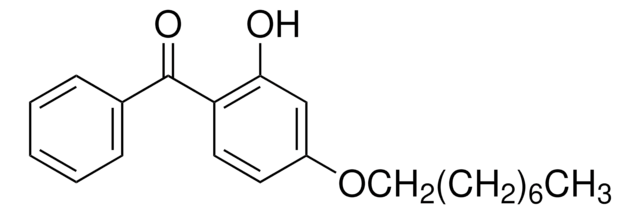Kluczowe dokumenty
86680
Tetraethylene glycol dimethacrylate
technical, ≥90% (GC)
Synonim(y):
PEG bismethacrylate, PEG dimethacrylate, PEG hydrogel
About This Item
Polecane produkty
klasa czystości
technical
Poziom jakości
Próba
≥90% (GC)
Formularz
liquid
zawiera
~0.006% hydroquinone as stabilizer
współczynnik refrakcji
n20/D 1.463
gęstość
1.082 g/mL at 20 °C (lit.)
grupa funkcyjna
ester
ether
methacrylate
temp. przechowywania
2-8°C
ciąg SMILES
C=C(C)C(OCCOCCOCCOCCOC(C(C)=C)=O)=O
InChI
1S/C16H26O7/c1-13(2)15(17)22-11-9-20-7-5-19-6-8-21-10-12-23-16(18)14(3)4/h1,3,5-12H2,2,4H3
Klucz InChI
LTHJXDSHSVNJKG-UHFFFAOYSA-N
Szukasz podobnych produktów? Odwiedź Przewodnik dotyczący porównywania produktów
Powiązane kategorie
Zastosowanie
- Reducing Polymerization Shrinkage: Study focused on reducing polymerization shrinkage in dental restorative composites by using various multifunctional (meth)acrylates including TEGDMA (Świderska et al., 2014).
- Anti-Metastasis and Anti-Angiogenic Activities: Identification of TEGDMA′s potential anti-cancer drug properties due to its anti-metastasis and anti-angiogenic activities (Oh et al., 2018).
Kod klasy składowania
10 - Combustible liquids
Klasa zagrożenia wodnego (WGK)
WGK 1
Temperatura zapłonu (°F)
230.0 °F - closed cup
Temperatura zapłonu (°C)
110 °C - closed cup
Środki ochrony indywidualnej
Eyeshields, Gloves, type ABEK (EN14387) respirator filter
Wybierz jedną z najnowszych wersji:
Masz już ten produkt?
Dokumenty związane z niedawno zakupionymi produktami zostały zamieszczone w Bibliotece dokumentów.
Klienci oglądali również te produkty
Nasz zespół naukowców ma doświadczenie we wszystkich obszarach badań, w tym w naukach przyrodniczych, materiałoznawstwie, syntezie chemicznej, chromatografii, analityce i wielu innych dziedzinach.
Skontaktuj się z zespołem ds. pomocy technicznej











